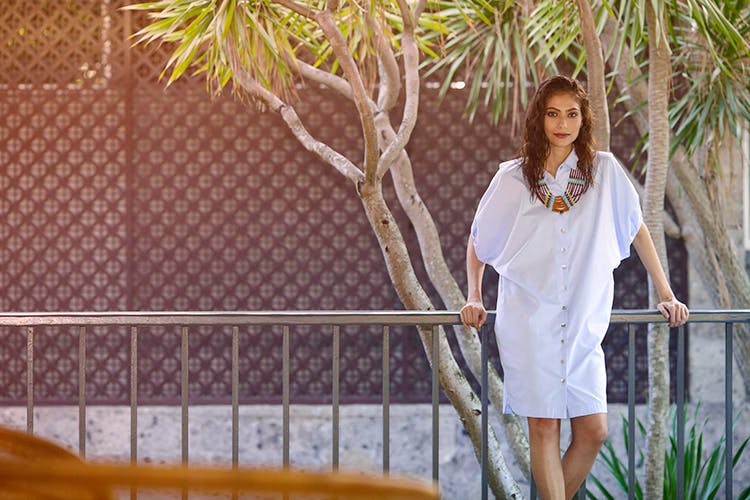Deeksha Nanda writes about her meeting with Anjana Das, creator of White Champa.
White Champa’s Summery Weaves with a Philippine Twist
Shortcut
Europe in the Lanes of Shahpur Jat
My introduction to White Champa was rather surreal. Nestled in Defence Colony, this quaint little store drew me in. Upon entering the store, I found myself transported to the streets of Europe {with a distinct Indian vibe}. It’s no surprise that since its establishment in 2006, the brand immediately found its foothold amidst sophisticated women in India and overseas.
Handcrafted in their atelier in New Delhi, White Champa seems to enthuse and inspire the wearer. I knew then that the journey of the lady behind the brand, Anjana Das, was one worth sharing. Encouraged by her own ‘east meets west’ existence, Anjana has given her creations a distinct interpretation. While fashion and comfort is too often used in the same sentence, White Champa has, through the purity of colour, simplicity of construction and feminine accent of its garments, defied this norm.
Clothes and Charisma
Like its creator, the White Champa woman is a natural fit in Delhi’s madness and kaleidoscopic existence. Anjana was brought up in Germany but her roots trail back to India and, “nothing will ever change that,” she emphatically states.
This cultural mélange can be seen in her collections—exquisite hand embroidered details with a modern twist are used to accentuate a neckline, hem or cuff. With silhouettes that highlight the contours of the female body and drape it beautifully, White Champa is a fashionable representation of the present time, the era of the modern, grounded woman. Her designs are also very versatile and can be sported both at day and night.
Inspirations
Having worked with Jean-Francois Lesage, and inspired by designers such as Issey Miyake, Dries Van Noten and Maiyet, to me the label is a crafted representation of contemporary Indian couture. The colour palette of the brand has an undertone of Europe, given the pastels and obvious European cut, but the element of surprise comes through with the usage of textiles like Cotton, Chanderi and Matka silks, linen and muslin.
#LBBTip
The accessories line, Traderoutes is well worth a look-see for its celebration of age-old indigenous Filipino traditions. Traderoutes is using handwoven banana fibre by the T’boli tribe, basketry by the Mangyan and woven fabrics from Ilocos for their bags, shoes and clutches.


